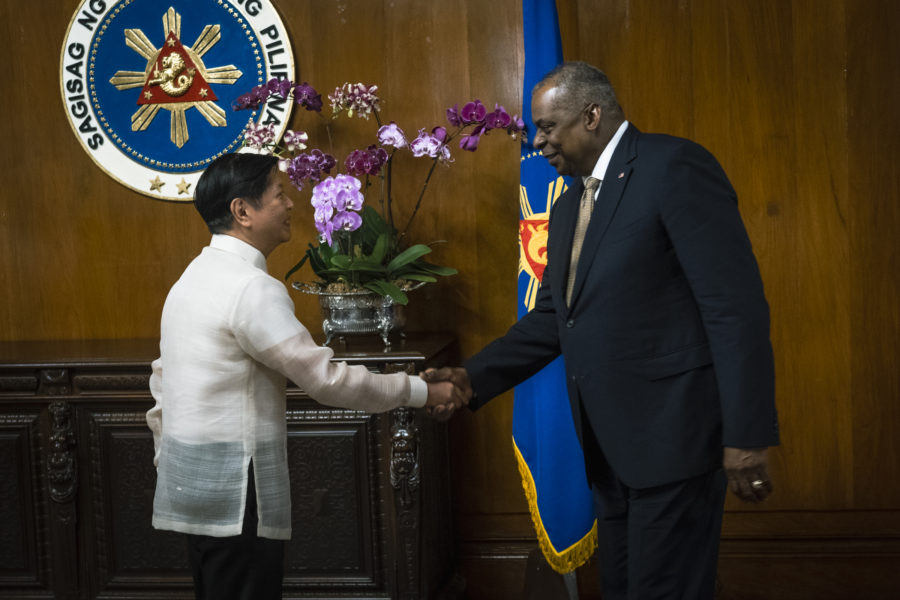The U.S. will be able to rotate troops and build facilities at four military bases in the Philippines, officials from the two countries announced Feb. 1, deepening their military cooperation to counter China.
Defense Secretary Lloyd J. Austin III and Philippine Secretary of National Defense Carlito Galvez made the joint announcement during Austin’s visit to the Philippines.
The deal expands the 2014 Enhanced Defense Cooperation Agreement, which did not allow U.S. troops to be based in the Philippines but did authorize access to “agreed locations … on a rotational basis, for security cooperation exercises, joint and combined military training activities, and humanitarian assistance and disaster relief activities,” according to the State Department.
The two countries had previously agreed to five locations, including four air bases. The U.S. has already allocated $82 million in infrastructure for those bases, the Pentagon noted in a release.
Officials declined to name the locations of the four new bases, with Galvez saying in a joint press conference that they will do so after consultations with local authorities. Possibilities include Clark Air Base, where the U.S. Air Force operated until 1991. In 2012, the Philippines agreed to give U.S. forces limited access to the base.
The U.S. and the Philippines have a long military relationship, dating back to the Spanish-American War, after which the U.S. acquired the territory from Spain. Even after its independence following World War II, tens of thousands of Filipinos joined and served in the American military, and the U.S. maintained a robust presence in the Philippines for decades. In 1991, the Philippine Senate voted not to reauthorize the basing agreement, and the U.S. left its bases there the following year.
Even after that, the two countries maintained close ties and conducted frequent military exercises together. During President Rodrigo Duterte time in office, he threatened to scale back joint exercises with the U.S. and pursued closer ties with Russia and China. That delayed implementation of the EDCA.
After Duterte left office in 2022, he was succeeded by Ferdinand Marcos Jr., the son of controversial former President Ferdinand Marcos Sr., who ruled for more than 20 years, imposing martial law for part of that time.
Under the younger Marcos, relations between the U.S. and the Philippines have strengthened, and EDCA projects are again ramping up. Said Austin: “This relationship is strong, and we will continue to work hard to strengthen it further.”
Last week U.S.. Pacific Air Forces Airmen visited Clark Air Base and Basa Air Base in the Philippines for a subject matter expert exchange with the Philippine Air Force. They discussed “munitions, maintenance, logistics, and hot pit refueling … [in] a precursor to cooperation in future large exercises in the Indo-Pacific region,” according to a Feb. 2 news release.
Galvez expressed interest in expanding the Philippine Air Force’s capabilities with U.S. platforms and further engagements in the future.
“We really need C-130s, and also those Black Hawks that we bought that we configured to search-and-rescue capability,” Galvez said. The Philippines signed a deal for 32 Black Hawk helicopters in February 2022 and has made moves to acquire C-130Js as well.
